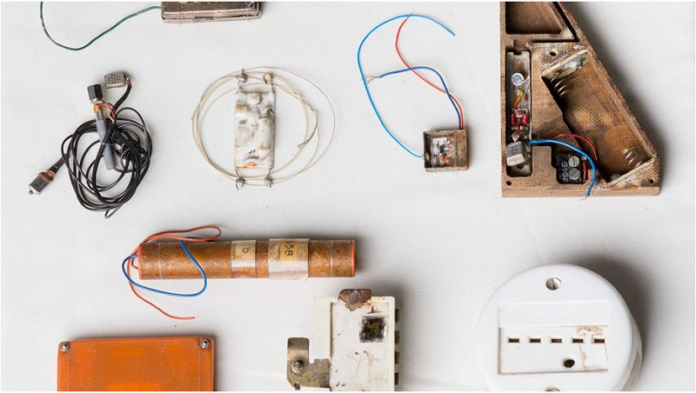Some people are very fearful that they are being watched wherever they go. In their homes, cars and in hotel rooms. Is this paranoia rational? It is according to security experts.
Today it is easier than ever before to set up a surveillance system to spy on people. With wireless connectivity being everywhere, it is very simple to connect a camera, a microphone or any other sensor to the internet. In addition to the ease of use, such devices are cheap and very accessible. It is therefore not unreasonable any longer to be wary of such devices in any space that you enter – even your own home.
The market for surveillance systems is growing very fast. HTF Market Intelligence forecasts a CAGR of 15 percent in the global video surveillance market which is expected to grow to nearly $106 billion by 2026.
Surveillance devices are becoming more creative with cameras in pens, toys and paintings. They are getting smaller and cheaper. In fact, manufacturers are getting very creative with embedding them in places you would least expect them.
Fortunately, these devices can be detected with the appropriate tools and some practice. Here we present a quick guide on how to check if you’re being bugged or watched.
Things to Look Out For
Examine your surroundings – has anything changed? Installing bugs requires either modifying or introducing a new object in your physical space. Sometimes a bug might be easy to spot especially if the person planting the bug has been careless or has had little time to do their job. It could be for instance a small camera stuck to the corner of a picture frame which is easy to spot if you’re wary and observant enough.
However, in general, a bug is not always an easy thing to detect. For instance, with bugs being designed into toys, how do you detect a bug in the stuffed toy collection below?
Notice Any New Power Cables?
Bugs are electrical devices that rely on a power source. The kind of processing activity that a bug engages in – recording of audio and video requires a steady power supply over a long period of time. This is not something that a coin cell or AA battery can provide reliably. Bugs therefore typically need to be powered through a consistent source. So check your power outlets and power strips for this type of connecting cable. This might be difficult to detect as most power strips can be very busy.
Take a Closer Look at Your Network
Bugs need to transmit the information they collect and an easy way to do this is over a wireless network. Obviously one of the easiest ways to do this is over your own home network. You can for instance log into your Wi-Fi router and check for any Wi-Fi devices that you may not recognize. This is not an exhaustive check for wireless activity though.
For instance, a bug might use a neighbor’s Wi-Fi network or use something longer range like a SIM card that connects to a cellular network. Such activity is harder to detect.
Tools And Techniques
As mentioned, bugs need to transmit the information they collect either continuously or periodically. The easiest and most discreet way to do this is over wireless. Fortunately, there are tools on the market that allow reliable detection of Radio Frequency (RF) signals.
These detection tools come with detailed instructions on how to use them and they are fairly simple to operate. There are also more complicated and generalized RF detection tools on the market such as Spectrum Analyzers. These products require a higher level of technical knowledge, expertise and sophistication on the part of the user. For instance, the user has to be able to interpret the output of a spectrum analyzer under several different measurement conditions. Relative to that a bug detector will interpret the radiowaves for the user.
There is an entire industry dedicated to finding bugs and it’s called Technical Surveillance and Counter Measures (TSCM).
Historically TSCM professionals used to serve large corporations and government customers. However, with time and the growth of wireless there is now a need for this service in homes and other venues such as gyms, rental properties, hotels, etc.
Summary
With wireless technology becoming cheaper and more readily available than ever before we are seeing an increase in the number of surveillance bugs. It is becoming more important to be aware of your environment as someone could be watching you. Fortunately, there are tools and technologies available today that allow you to detect such malicious devices.








